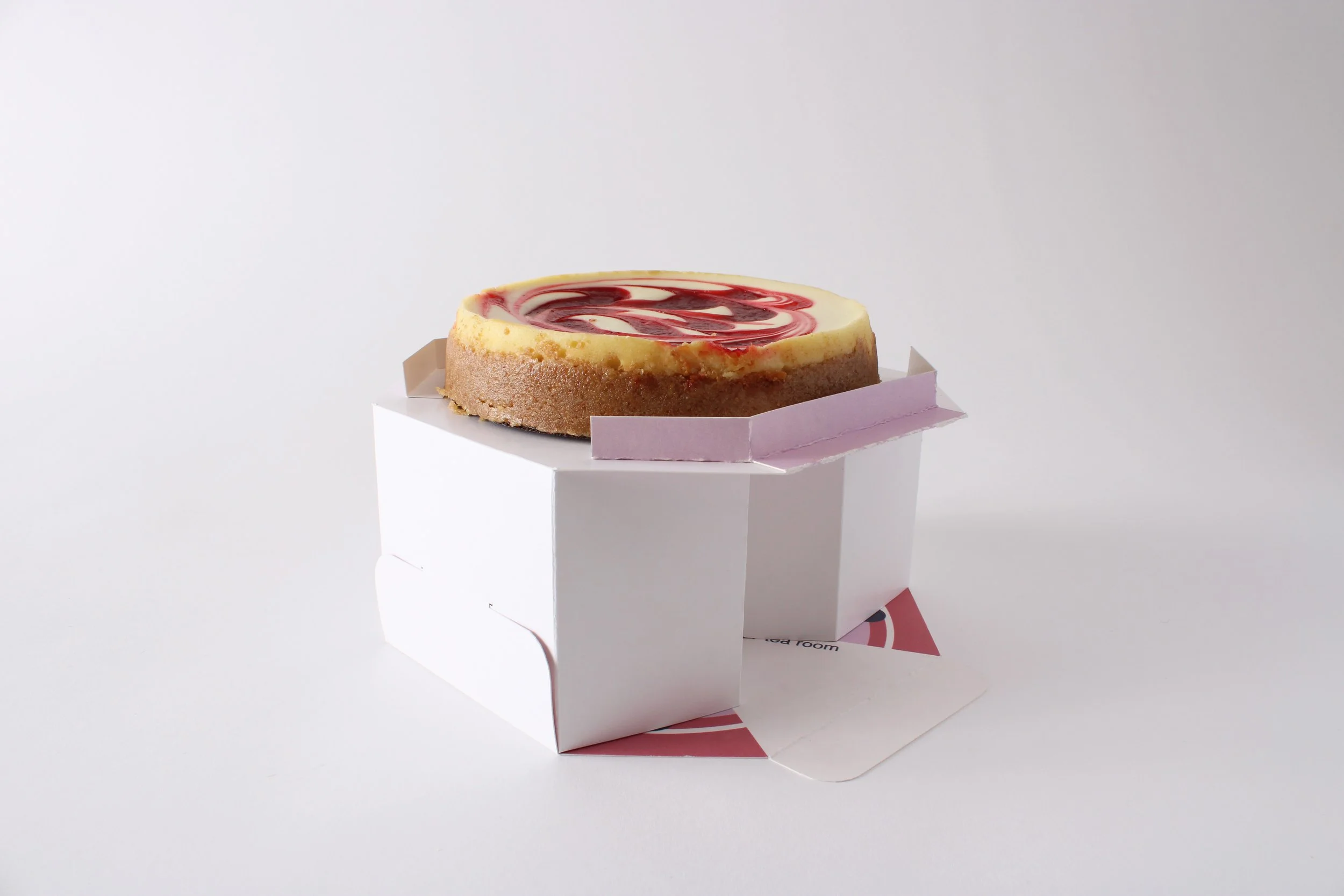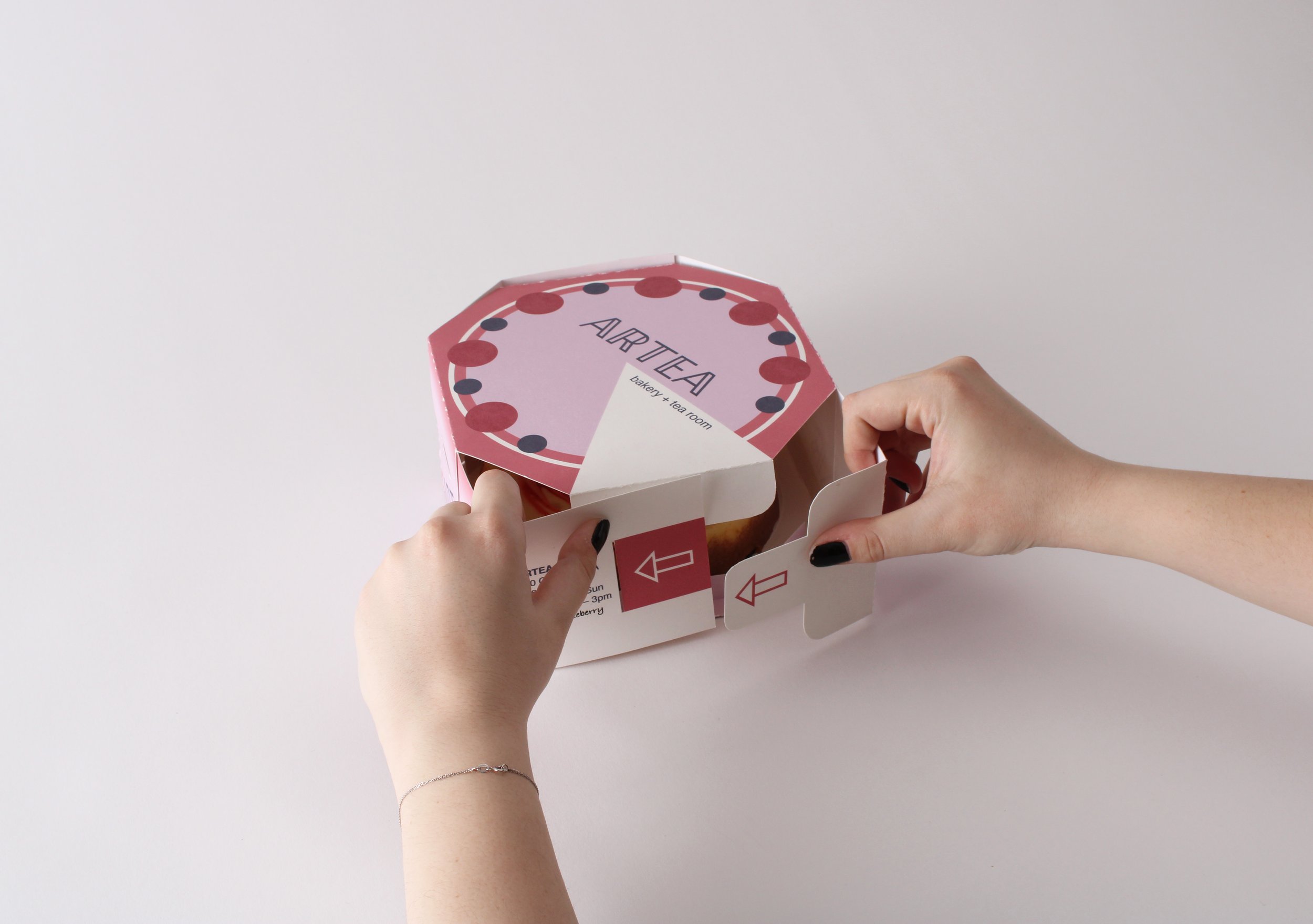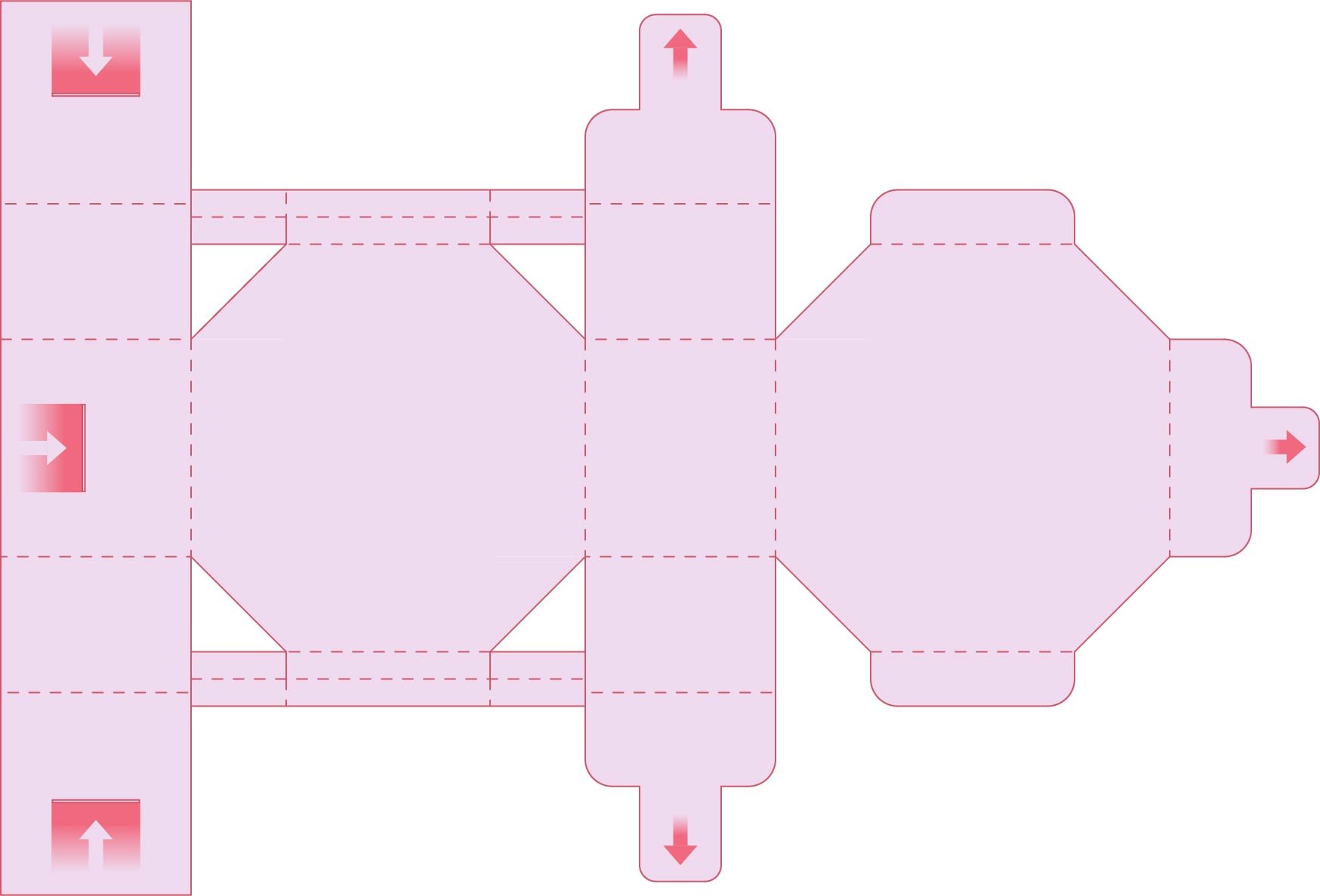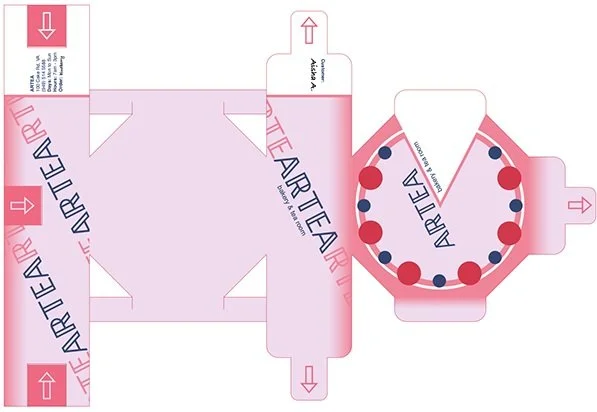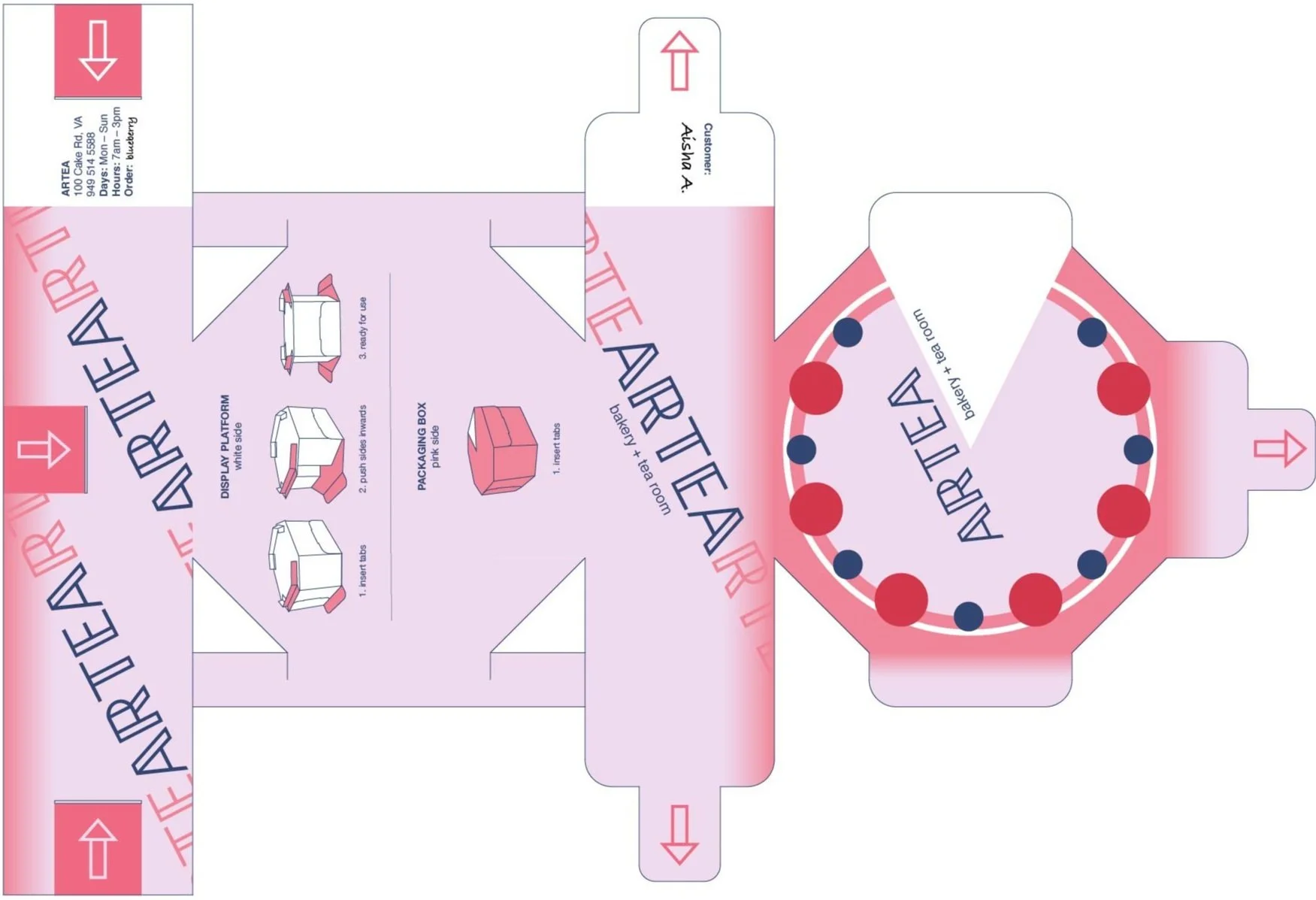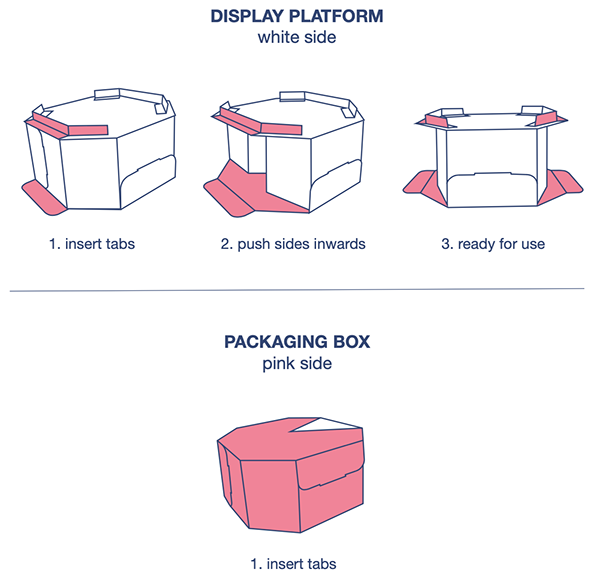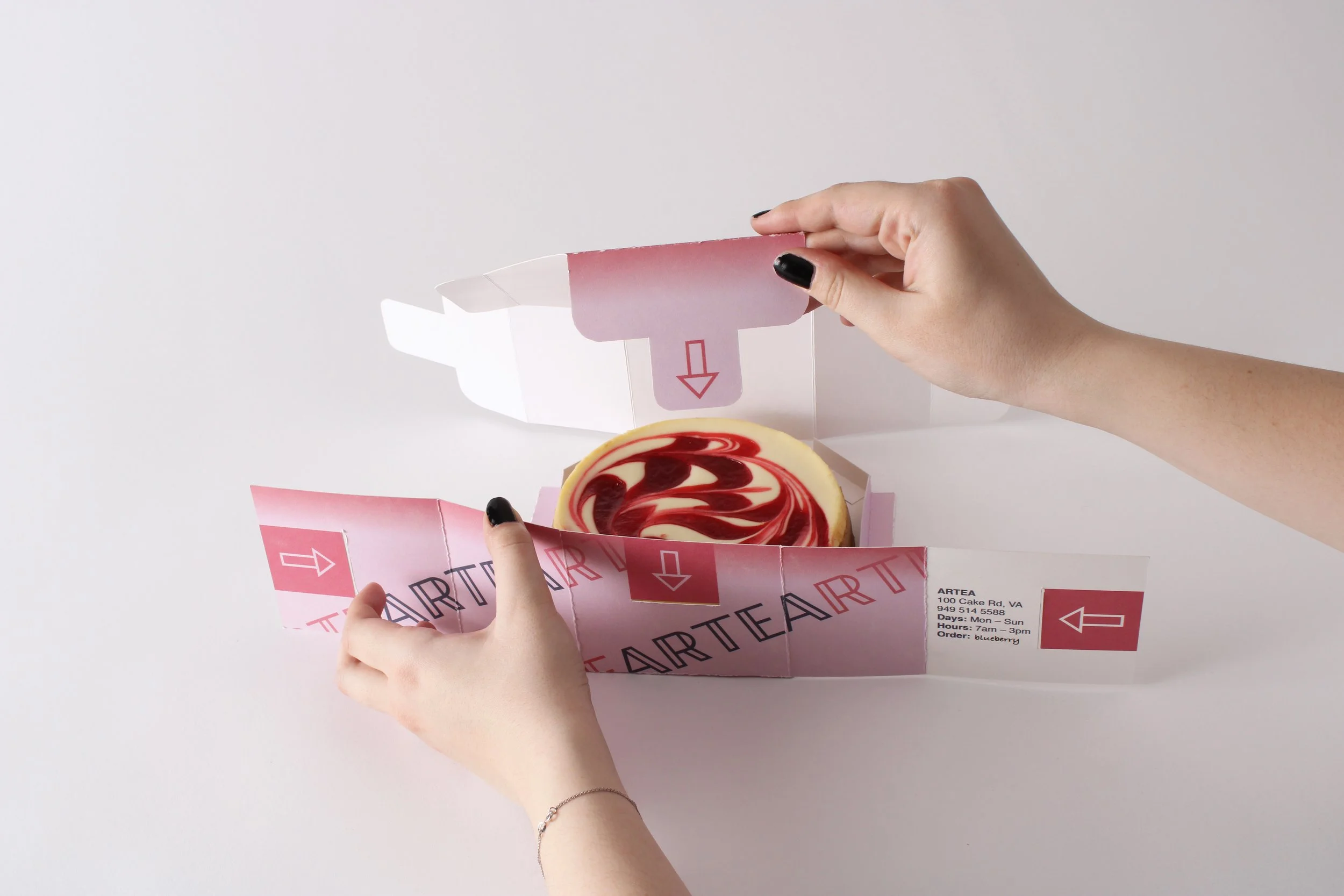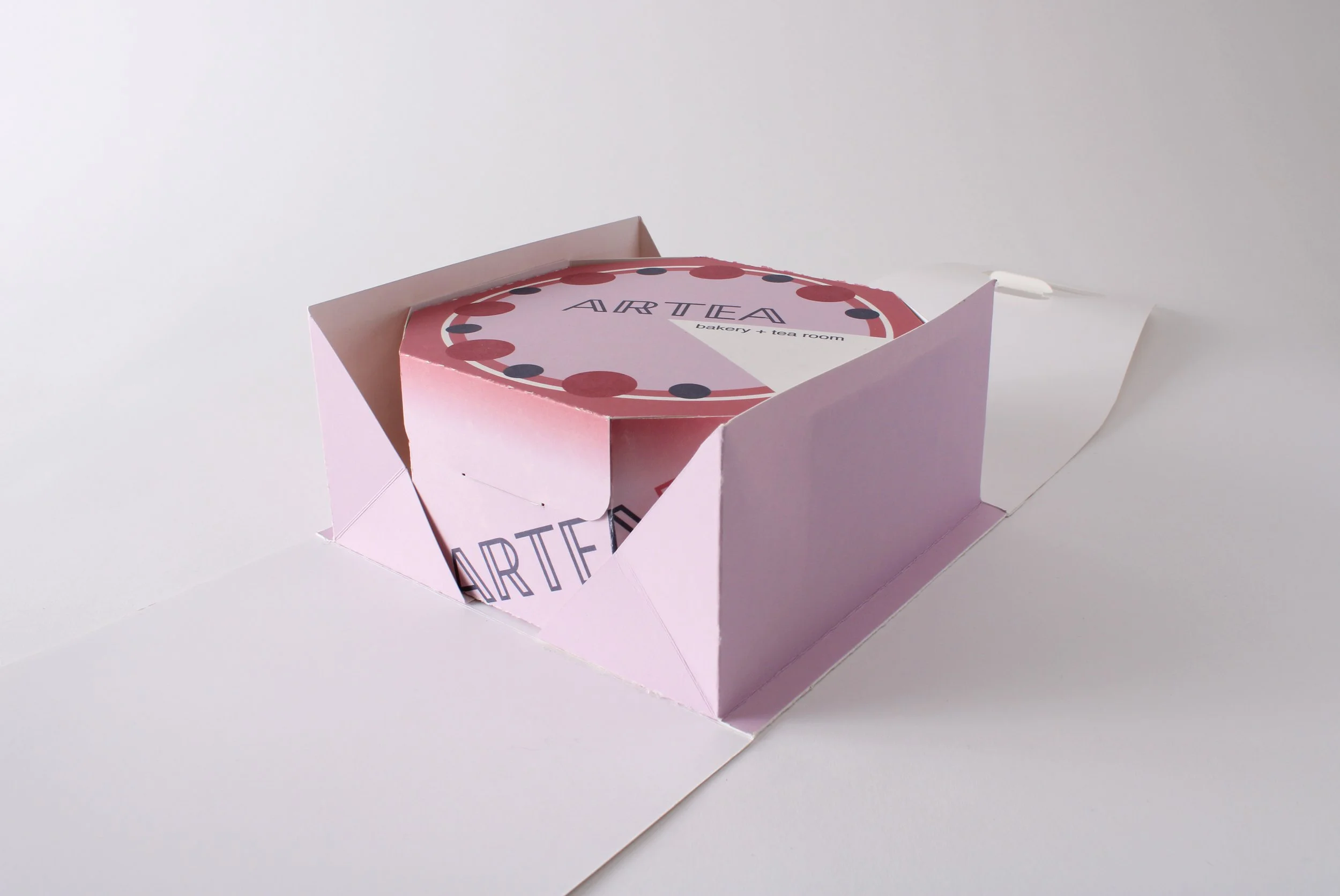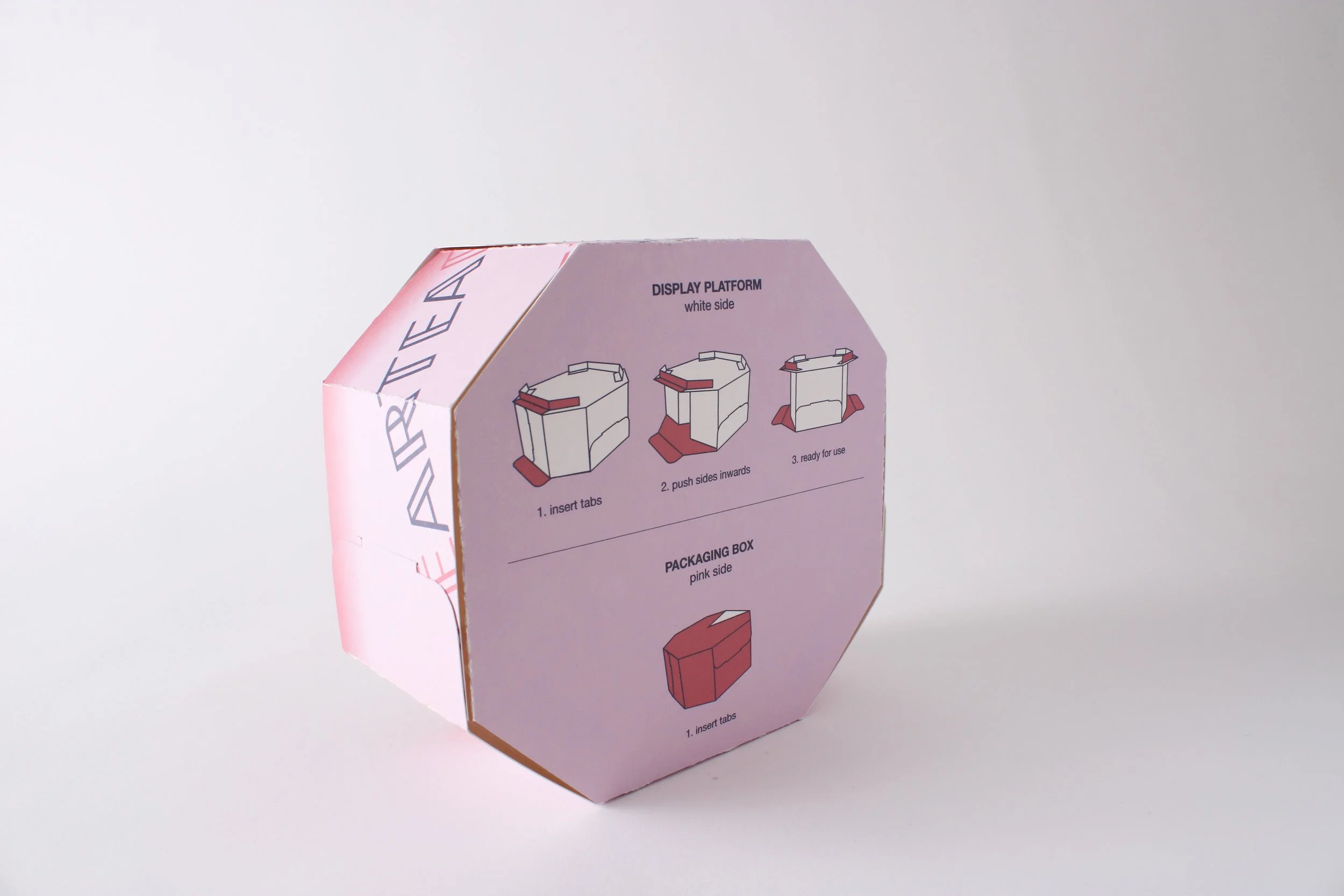Cake Guard
a reversible cake packaging system (2024)
Cafés use paper packaging to deliver goods from display to customer. To avoid cosmetic damage, the transfer process requires careful, sanitary handling. After pick-up, the package must provide security during transportation and easy access for retrieval. Cake Guard is a packaging system that aims to increase efficiency by transforming from a display platform into a take-out box without excess handling of the product. Similarly, it can be used as a platform again by the customer.
Process
To focus the project on a specific context, I interviewed the owner of ArTeA, a bakery and tea room in Virginia. After learning about their needs, preferences, and dimensional constraints, I quickly prototyped ideas using printer paper before transitioning to a heavier card stock. Through an iterative prototyping approach, I selected a reversible octagon concept with slotted closing tabs.
By observing the behavior of my prototypes with weighted objects as placeholders, I established construction features that would reinforce the intended function in each state—display platform and packaging box. For example, in the display state, the platform has ridges on each side to prevent the cake from sliding off.
small-scale prototype with first closing tab iteration
full-scale prototype with second tab iteration + carrier
After I achieved a functional dieline through prototyping, I created a dimensioned sketch in SolidWorks and then transferred the lines into an Adobe Illustrator file. From there, I created surface graphics for the box and carrier, including the name of the café and arrows to guide assembly.
After receiving feedback from my professor and classmates, I refined the graphics and added an instructional illustration on the bottom. The instructions show the assembly steps for each state of the packaging. The display state requires the user to push the sides inwards to provide more structure to support the load.
first iteration surface graphics
second iteration surface graphics
third iteration surface graphics
close up of instructional graphics
Outcome
The final product is a completely reversible design with branded surface graphics in the packaging box state. It is accompanied by an outer carrier that enables comfortable transport of a cake and any additional purchases. The carrier also allows room for storage of utensils or napkins.
Moving forward, it would be valuable to further assess the construction and user experience of the design. By testing a variety of cakes, load and size limitations can be identified. Similarly, user tests can be conducted to improve assembly instructions and accompanying surface graphics.
